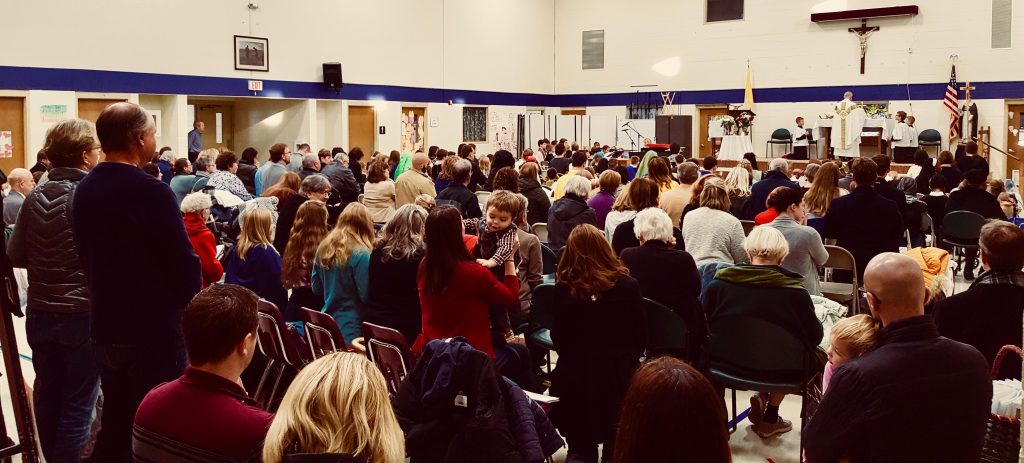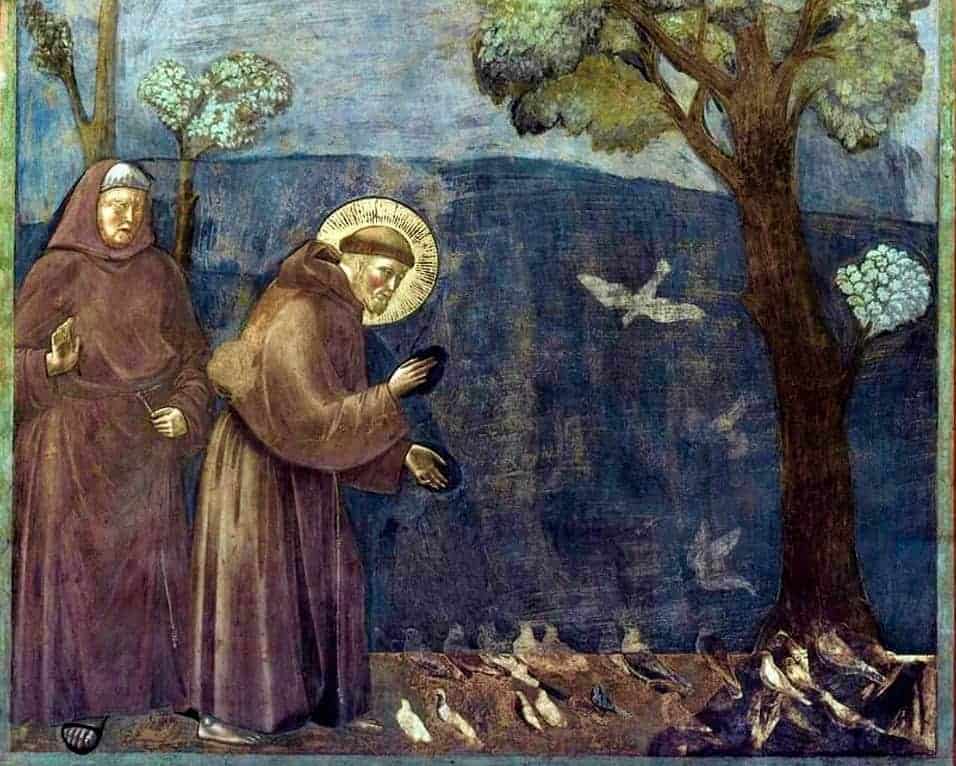Have you noticed the headlines about Catholic school teachers who have been fired for living in ways that contradict Church teaching? Some are suing their former employers for discrimination. In another case, a bishop revoked the Catholic identity from a high school because a teacher there is living in a homosexual relationship. In that instance, Bishop Charles Thompson explained his decision:
“To effectively bear witness to Christ, whether they teach religion or not, all ministers in their professional and private lives must convey and be supportive of Catholic Church teaching.”
A Catholic school requires its teachers to live according to Church teaching. Is that surprising? Is that newsworthy? It shouldn’t be surprising and it shouldn’t be newsworthy. It should be expected. But here we are. People are taken aback when a Catholic school asserts its identity on important, even essential issues pertaining to the moral life. How did we get to this point?
I’m not surprised that the Church is facing legal challenges for what she teaches, especially when it comes to morality. I expect more of this will be coming down the pike, as any deviation from the secularist’s authoritarian (and ascendant) doctrine on sexuality is immediately targeted for persecution and, ultimately elimination. Dissent is not tolerated.
We know what to expect from the world. But what about the Catholic schools? What is the real source of the shock when a Catholic school comes out in defense of a very unpopular teaching regarding the moral life? The source is, at least in part, the fact that we’re simply no longer used to thinking of Catholic schools as holdouts of Catholic orthodoxy. For well-over a generation, Catholic schools have largely tolerated, and even embraced the tenets of secularism. The traditional Catholic identity of schools has largely been eclipsed by a desire on the part of the administrators, and even some parents, to be seen as elite and prestigious, to be seen as respectable by the mainstream, bourgeois class. “Academic freedom” has been used as a Trojan horse, not only to introduce an alternative worldview into the school, but also to downplay or completely erase the entire spiritual patrimony of the Church.
Of course, it’s not fair to lay all the blame at the feet of Catholic schools. In many ways, they are victims of the larger cultural phenomenon of an expanding secularism over the past several generations. This expanding and hyper-aggressive secularism has impacted Catholic life like a powerful tsunami on so many levels: the family, the local parish/liturgy, diocesan administration, the seminary, the schools/universities, hospitals, Catholics in public life, and so on. This militant secularism has its own metaphysics, its own anthropology, its own moral code. Its adherents are confident in what they believe and are not shy about proselytizing and, as mentioned earlier, quashing opposition. But it must also be said that the above-mentioned institutions have not done a very good job resisting the wave. In many respects, instead of pushing back, they’ve been swept along and eventually assimilated into the zeitgeist of secularism.
Liturgies have become overly anthropocentric. Swaths of self-described Catholics dissent from Church teaching on a range of issues with impunity (contraception, abortion, marriage, the male-priesthood, etc.), and Catholic schools align with a progressive Deweyn pedagogy. Traditional doctrine is almost completely sidelined, while social justice and multiculturalism take center stage. (Don’t get me wrong, working in soup kitchens and building houses for the poor is absolutely commendable. Catholic schools should promote this. But are students also being taught the far less popular things? What about chastity, modesty, purity and combatting sin?) To lean more about the recent, sad history of American seminaries, read Michael S. Rose’s fascinating Goodbye Good Men.
So the norm within Catholic sectors for some time now has been, if not outright acceptance, at least reluctant acquiescence to the creed of secularism. They have attempted to broker a compromise with modernity, but we’ve seen that to compromise is to surrender. The silver lining is that there are signs of a pushback, largely driven by the laity.
Parishes that support reverent liturgies are growing. In particular, the traditional Latin Mass is experiencing a remarkable time of growth. You could call it a renaissance. Religious orders and societies that promote traditional liturgy and devotional life are receiving incredibly high numbers of applicants. What’s going on? Well, the demand for an alternative to the status quo is on the rise. Give people a clear, unambiguous alternative to what has become the uninspiring norm, and you’ll get a response. And what about the schools?
Home schooling is more common, as is the number of classical Catholic schools. What sets classical Catholic schools apart from the status quo of Catholic schools? Like the traditional parishes, instead of acquiescing, these schools offer a stark, positive alternative that has a long track record of success. First is their recognition of the pedoggcial decomposition within education that has arisen ever since John Dewey revolutionized it. Consistent with the Catholic vision, classical schools see knowledge as a unified, integrated whole, not fragmented. Writing on education, Cardinal Newman spoke of the “circle of knowledge.” Classical schools see the world as being infused with logos, with reason and order, all derivative of and flowing from the Divine Logos, God Himself. All subjects, therefore, have God at their center and as their focus. Faith and reason are united, not bifurcated in the classroom. Rather than seeing education as simply a doorway to the next highly ranked school, career skills, jobs and money, classical schools see education as primarily about an interior turn to what is true. (This is rooted in Saint Augustine’s theory of leaning, and is also seen in Plato.)

This interior turn to truth that occurs during authentic education results in greater self-knowledge on the part of the student, and ultimately to his fulfillment and happiness, or eudemonia.
History is seen, not as a random series of unrelated events, but through the lens of salvation history; God revealing Himself to mankind over the centuries, culminating in the Incarnation of His Son, Jesus Christ and His death and resurrection. The students see themselves as an important part of this incredible, exciting historical narrative filled with heroes (saints) and villains.
Classical schools focus on stimulating the imagination and sense of wonder within the student. God’s creation, the order of the natural world, is beautiful and students are led to marvel at this “art” of God through a spirit of joyful, quiet and grateful contemplation.

Rather than jumping on the popular bandwagon of putting tablets and screeds in students’ hands, classical schools prefer books (especially primary sources) and Socratic dialogue, listening and reflecting, as the best way to teach students. A classical school that is Catholic should stand out in several ways as well.
First of all, primary attention is given to the liturgical life of the Church. Daily Mass (or at least weekly) with frequent opportunities for Confession, Adoration and other traditional devotional practices is the norm. Students should see liturgy, with its order, structure, beauty, reverence and solemnity, as the source of their spiritual lives, as well as the source of their Catholic identity and culture.

Prayer in the classrooms is regular and structured. Every class begins with prayer and may end with prayer. The Angelus is recited in community at noon. Assembly and dismissal begin and end with prayer. Students frequent the chapel daily to pray before the Blessed Sacrament. Instruction in the art of prayer is given a pride of place in the classrooms. This reminds students of their continual obligation before God to worship, praise and thank Him.
The virtues, theological and cardinal, make up the other pillar of a Catholic classical school. Students learn about prudence, for example, in literature, in catechism, in gym and throughout the day. They learn how to cultivate the life of virtue through reading, discussion and prayer. The lives of the saints are familiar stories at a Catholic classical school. There is no better way to instruct students in the life of virtue that to turn to the saints of the Church and learn about their lives.

The Catholic classical school is noteworthy for its order and structure. Order is beautiful, whether in the interior life of the soul, or in the way students line up for recess. Our world is increasingly embracing an anthropology of chaos and radical individualism. Classical schools resist this trend. The life of virtue is a life of order. A virtuous student is ordered and therefore beautiful.
Beauty is also another hallmark of classical schools. The classrooms should be beautiful. They shouldn’t be overloaded with tacky, garish decorations and posters, as often occurs in typical classrooms. Carefully selected works of art, as well as plants, etc., adorn the room in a tasteful way. Students are familiar with the great artists of Western civilization and their timeless works of art. Michelangelo, Bramante, Raphael, Bernini, Caravaggio, Fra Angelico are familiar names at a classical school. Students at Catholic classical schools are culturally literate, civilized and well-mannered.
Finally, Catholic classical schools are faithful to the Magisterium of the Catholic Church. The teachers and administrators are faithful, prayerful and completely dedicated to passing on the richness of the Church’s spiritual and intellectual patrimony to the students. They recognize the cultural malaise that has impacted many Catholic schools over the past several decades. They see the terrible consequences that have resulted from these schools’ capitulation to John Dewey’s theory of education, as well as to the culture of relativism, religious indifferentism and individualism. Catholic classical schools know what they believe and are determined to defend it against the onslaught of modern society and its disorienting static. They carefully hire faculty who get this as well. They aren’t straining, on the one hand, to affirm some semblance of Catholic identity, while on the other, placating the expectations of a culture that rejects the fundamental principles upon which that Catholic identity is built. They begin with a rejection of those expectations and assumptions. It makes fostering a unified culture and identity much easier.
Headlines aside, the good news is that, within the arena of Catholic education, there are positive alternatives to the mediocre status quo. These alternatives, homeschooling and Catholic classical schools, are rooted in thousands of years of history and tradition. They take their lead, not from the rulebook of secularism, multiculturalism or John Dewey, but from the inspiration of the Aristotle, the Gospels, Augustine and Aquinas, Giotto and Bernini.

